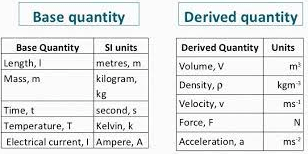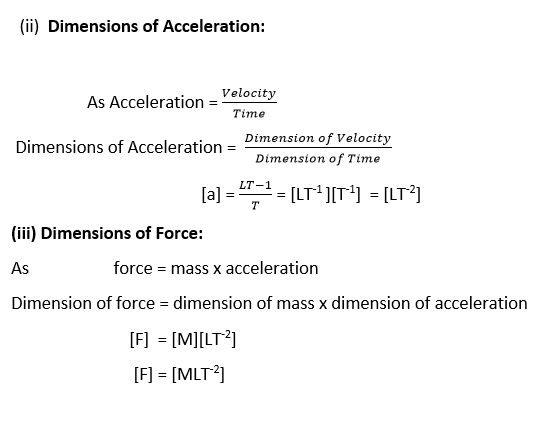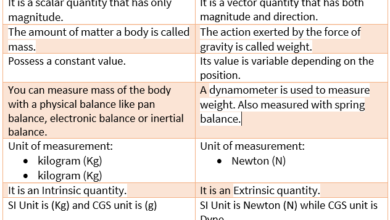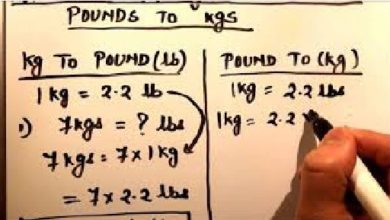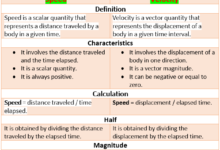Types of Physical Quantities
All those quantities in terms of which laws of physics can be described are called physical quantities. there are two types of Physical Quantities.
Types of Physical Quantities
Physical Quantities are divided into:
- Base Quantities
- Derived Quantities
Base Quantities
the minimum number of those physical quantities in terms of which other physical quantities can be defined are called base quantities. for example, length, mass, time, etc.
Derived Quantities
physical quantities whose definitions are based on other physical quantities are called derived quantities. for example velocity, acceleration, momentum, force, etc.
Measurement of Base Quantities
the measurement of such quantities involves two steps:
- the choice of the standard.
- the procedure for comparing the quantity to be measured with the standard.
Properties of an ideal standard
an ideal standard has two principal characteristics;
- it is accessible
- it is invariable
these two requirements are often incompatible and compromise has to be made between them.
For Your Information
(i) Meter: the distance traveled by light in vacuum during a time of 1/299,792,,458 seconds.
(ii) Kilogram: it is defined as the mass of a platinum (90%) and iridium (10%) alloy cylinder, 3.9cm in diameter and 3.9 cm in height. kept at the international bureau of weights and measures in France. this mass standard was established in 1901.
(iii) Second: the duration in which the outermost electron of the cesium. 133 atoms make 9,192,631,770 vibrations.
(iv) Kelvin: it is the fraction 1/273.16 of the thermodynamic temperature of the triple point of water.
(v) Ampere: the unit of electric current is ampere. it is that constant current which if maintained in two straight parallel conductors of infinite length, of negligible circular cross-section and placed a meter of length.
(vi) Candela: the unit of luminous intensity in candela. it is defined as the luminous intensity in the perpendicular direction of a surface of 1/60000 square meters of a black body radiator at the solidification temperature of platinum under standard atmospheric pressure.
(vii) Mole: the mole is the amount of substance of a system that contains as many elementary entities as there are atoms in 0.012 kg if carbon 12. one mole of any substance contains 6.0225 x 10²³ entities.
Dimensions of Physical Quantities
the dimension of a physical quantity represents the nature of that physical quantity. each basic physical quantity represented by a specific symbol within square brackets.
the dimensions of length, mass, and time are [L], [M], and [T] respectively.
For your information:
the pair of quantities which have the same dimensions:
- work, torque, energy
- impulse, momentum
- angular momentum, plank’s constant
- pressure, stress, elastic modulus
- radioactivity, frequency
(I) Dimensions of Speed:
As Speed = Length/Time
Dimensions of Speed =[V] = dimensions of length [L]/Dimensions of time [T]
= [LT-¹]
Uses of dimensions
using the method of dimensions called dimensional analysis; we can check the correctness of a given formula or an equation and can also derive it.
(I) checking the homogeneity of the physical equation
in order to check the corrections of an equation, we are to show the dimension of the quantities on both sides of the equation is the same, irrespective of the form of the formulas. this is called the principle of homogeneity of dimensions.
(ii) Deriving the possible formula
the success of this method for deriving a relation for a physical quantity depends on the correct guessing of various factors on which the physical quantity depends.
For your information:
Dimensional variables
force, velocity, etc.
Non-Dimensional variables
plane angle, solid angle, etc.
Dimensional constants
g, G, k, etc.
Non-Dimensional Constants
Reflective index, dielectric constant, etc.
the dimensional analysis deals with the physical quantities in their qualitative meaning.
You May Also Like:
